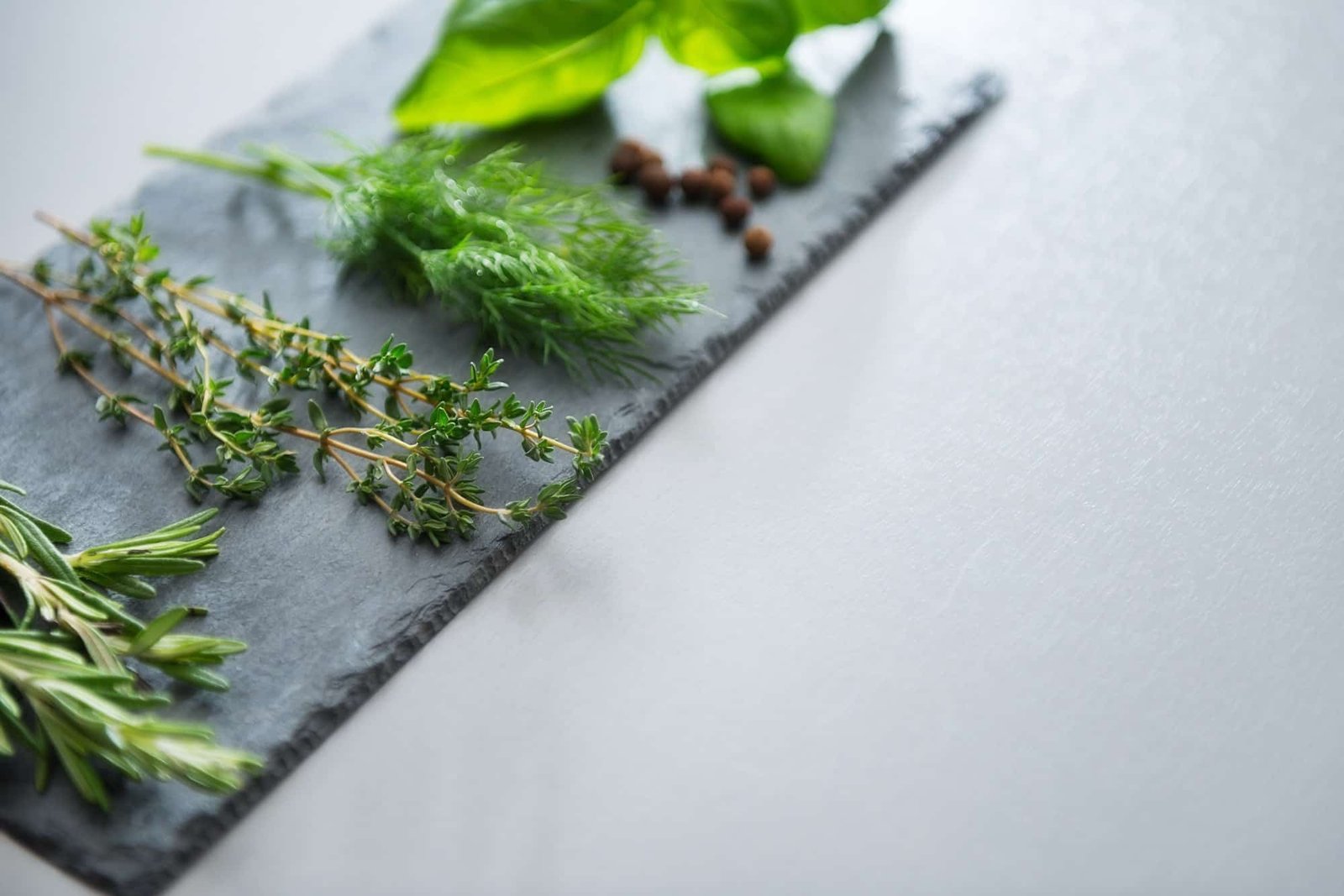No offense to the sturdy, sensible cabbages and root vegetables of winter, or the first delicate shoots of asparagus that signal spring’s arrival, but harvest time is unquestionably the best time of year if you’re a foodie.
It’s easy to get wrapped up in picking apples, canning tomatoes, and figuring out what to do with all of that zucchini and forget about preserving the abundance of fresh herbs!
Herbs are very expensive when you buy them in the store, so if you have a garden, why not grow your favorites? Then follow this guide, which explains how to dehydrate herbs. You’ll be able to appreciate your garden’s bounty all year long.
Should You Dehydrate Herbs or Freeze Them?
First, should you dehydrate your herbs or freeze them? Herbs don’t take up a lot of freezer space, so unlike the decision of whether to freeze or can tomatoes, it might seem like a tossup. However, gardening and cooking experts say that the choice you make is dependent on which herb you’re talking about!
Lighter, brighter herbs that are often used as a way to finish or garnish a dish, should be frozen. Parsley, cilantro, mint, basil, and chives fall into this category.
If you grow mostly hardier herbs like rosemary, thyme, sage, or oregano, drying is the way to go. Not sure which category your herbs fall into? Freeze a small portion for a few days, then use it in a dish to see how it works. Then you can dehydrate or freeze the remainder accordingly.
What We Need
- Choose the Right Food Dehydrator for Herbs
- Kitchen Towel
- Jar
How To Dehydrate Herbs
The first step, of course, is harvesting your herbs. It’s best to do so in the morning, but wait until any dew has evaporated.
Bring your herbs inside and rinse them in cool water. Give them a gentle shake to remove excess moisture, then lay them on a clean kitchen towel. Letting them air dry for a little while will reduce the amount of work your dehydrator needs to do. However, don’t spin them in a salad spinner or wring them between towels. That can lead to bruising.
You’ll also want to remove any leaves that have spots, bruises, or other damage. Remove long stems, as well. You can leave shorter stems in place, as they’re easy to remove after dehydrating.
Place your herbs in the dehydrator in a single layer. Make sure that there’s plenty of room for the air to circulate around the herbs. Depending on the type of dehydrator you have, this may require removing some of the trays.
Dehydrate herbs on the lowest possible temperature, to retain as much of their flavor as you can. Shoot for 95 F to 115 F. If it’s particularly humid, you might go with a slightly higher temp, say 125 F.
Your herbs will take a few hours to dry. Once the leaves are brittle and crush easily, remove them from the dehydrator and package in jars or plastic bags.
Dehydrated Herbs: Storing for Maximum Taste and Longevity
Storing herbs correctly is key if you want to maximize their shelf-life. Follow these steps to ensure that your dried herbs taste great for months to come!
Cool Before Storage:
After drying, let the herbs cool completely before transferring them to their storage container.
Remove Stems:
To ensure the herbs stay fresh, remove stems before storing.
Whole over Crumbling:
For extra flavor, store herbs whole instead of crumbling them prior to usage. This will also help preserve their shelf-life for longer.
Air Tight Container:
Transfer the herbs into an air-tight container. This will help prevent moisture from getting inside and ruining the herbs.
Vacuum Seal:
If you want to further extend shelf-life, vacuum seal the container for maximum protection against air and moisture.
Moisture Absorbing Desiccant Packet:
In areas with high humidity levels, or when opening and closing the container often, add a small desiccant packet. This will help absorb any moisture that might enter the container.
Label:
Finally, label the container with the date, name of the herb, and other important details.
Location:
Place the container in a cool, dark, and dry place – like a pantry cabinet. This will help to keep the herbs fresh for months to come.
By following these simple steps, you’ll be able to store your dried herbs as if they were freshly picked from your garden! Not only will the herbs last longer, but their flavor and texture will also remain intact. Enjoy!
What Are The Best Containers To Store Dried Herbs
Your herbs are precious, and their storage deserves your attention. Here’s how to ensure they remain fresh and potent for longer:
1. Shield from Oxygen
Oxygen is the enemy of freshness. Over time, it will degrade the quality of your herbs. So, keep them in air-tight containers to maintain their potency.
2. Choose the Right Containers
Different containers offer different levels of protection:
- Glass Jars: These are excellent choices, especially ones with clamp-on lips. They provide a tight seal that keeps oxygen out.
- Metal Tins: If you prefer a more rustic look, opt for metal tins with screw-top lids. They’re just as effective in keeping your herbs safe.
3. Avoid Plastic
While plastic containers might seem convenient, they could be detrimental to your herbs. Toxins from plastic materials can seep into your herbs, affecting their quality and safety.
Remember, your herbs deserve the best care. By following these simple yet effective strategies, you’ll ensure their longevity and potency, enhancing your culinary or medicinal experiences.
Mastering the Use of Dehydrated Herbs
Harness the full potential of dehydrated herbs. Their concentrated flavor can bring a bold twist to your culinary endeavors. Here’s how you can integrate them into your recipes with confidence and authority.
Substituting Dehydrated for Fresh Herbs
Dehydrated herbs pack a significant punch. They’re more potent than their fresh counterparts, so use them sparingly. A good rule of thumb: replace one tablespoon of fresh herbs with just one teaspoon of the dried variety.
Innovative Ways to Use Dehydrated Herbs
Don’t limit yourself to just substituting dehydrated herbs for fresh ones. Get creative and experiment. Here are some ideas to get you started:
- Revive Your Pesto or Chimichurri: Soak dehydrated herbs in warm water, drain, and add them to your homemade pesto or chimichurri. It’s an easy way to add depth and intensity.
- Elevate Your Iced Tea: Sprinkle some dried mint into your iced tea. It’ll add a refreshing twist that’s perfect for a hot day.
- Enhance Marinades and Rubs: Infuse your marinades and rubs with dehydrated herbs. They’ll help you achieve that bold flavor you’re after.
- Upgrade Your Camping Meals: Who said backpacking meals have to be bland? Try adding dehydrated herbs to dishes like Cold Soak Pasta Salad or Dehydrated Pasta Primavera. You’ll be surprised at the difference they make.
Remember, cooking is an art, and dehydrated herbs are another tool. Use them wisely, and your dishes will be the talk of the town.
The Shelf Life of Dried Herbs: A Definitive Guide
The flavor of your dishes hinges on the quality of your ingredients, and dried herbs are no exception. Understanding their shelf life is crucial. Here’s your authoritative guide:
How Long Does Dried Herbs Last?
- On average, dried herbs can retain their potency for a year.
Factors Affecting the Shelf-life
- The initial quality of the herbs
- The storage conditions
- The specific type of herb
Storage Tips for Extended Shelf Life
- Store them in a cool, dark place.
- Avoid heat and humidity.
- Use an airtight container to limit exposure to air.
Identifying Aging Herbs
- Over time, herbs lose their potency.
- A faded color or lost aroma indicates it’s time for a replacement.
In essence, while the shelf life of dried herbs can stretch to a few years, they’re at their prime in the first year. Proper storage can prolong their life, but always be mindful of their appearance and scent to ensure the best flavor for your dishes. Remember, the quality of your herbs directly influences the taste of your culinary creations. So, keep them fresh, use them wisely, and enjoy the burst of flavors they bring to your table.
Wrapping Up
Dehydrating herbs is an incredibly simple way to savor the fresh garden flavor for months. It’s also an economical way to jazz up even ordinary dishes. Now that you know how to dehydrate herbs, you can start imagining all the delicious dishes you will make with them throughout the year!
What are your favorite herbs to cook with? What do you like to store your herbs and spices in? Let us know your thoughts in the comments!

